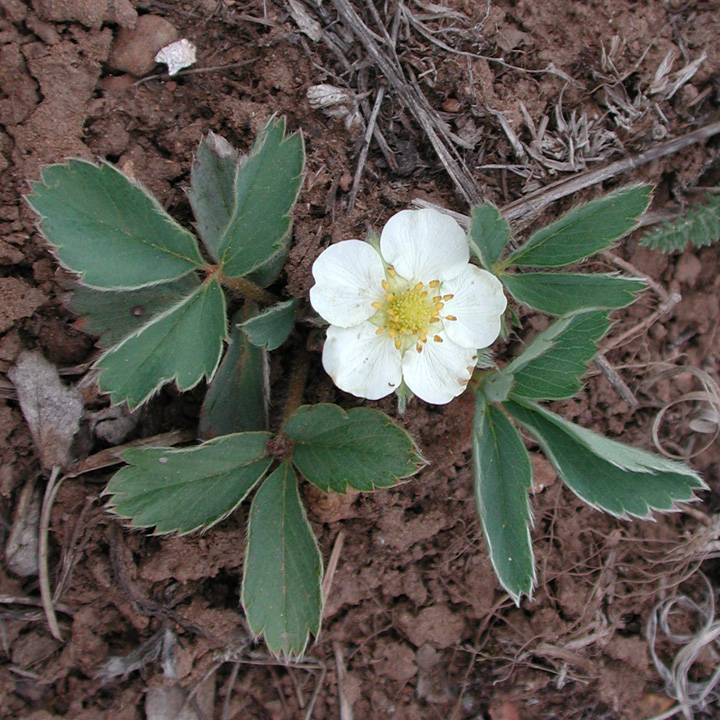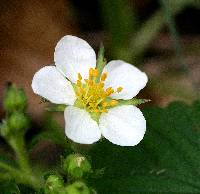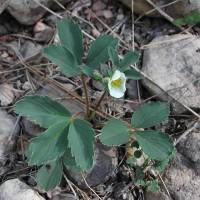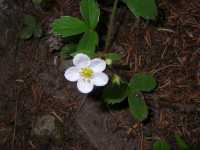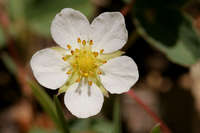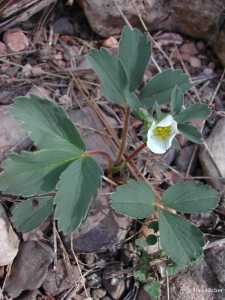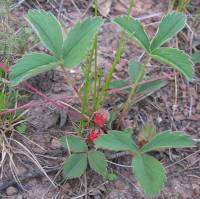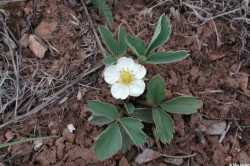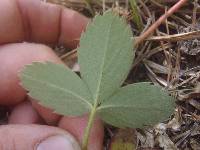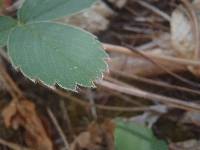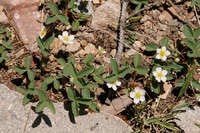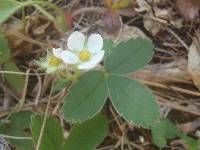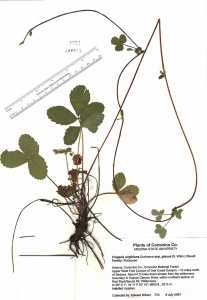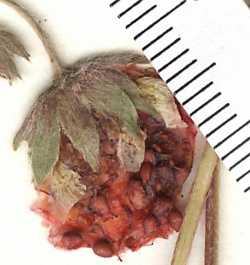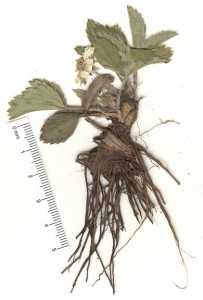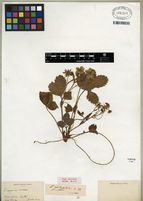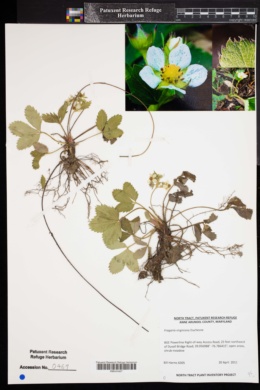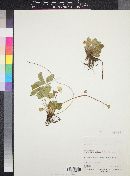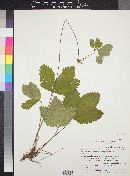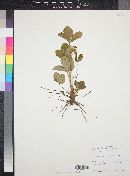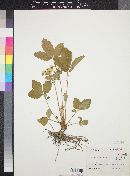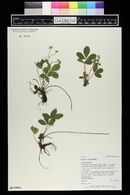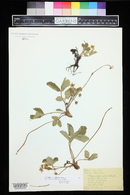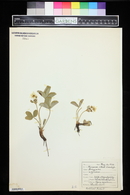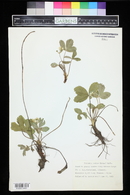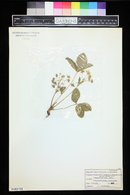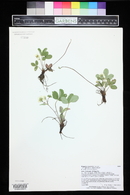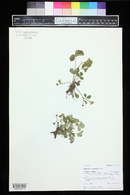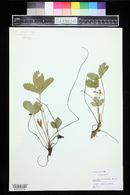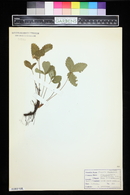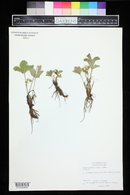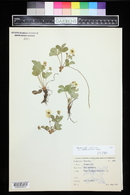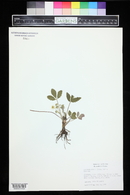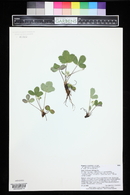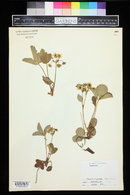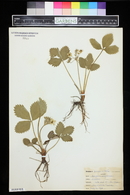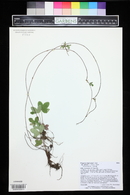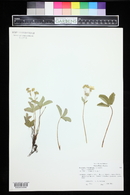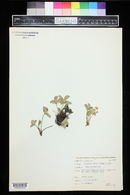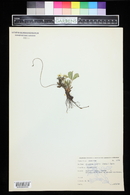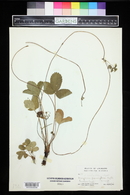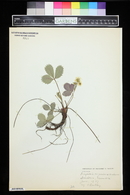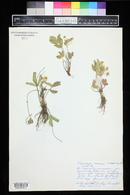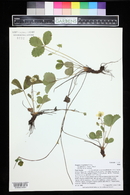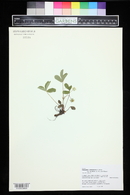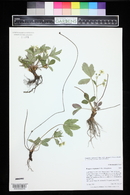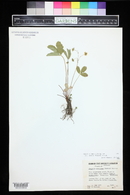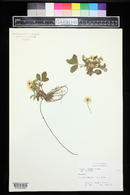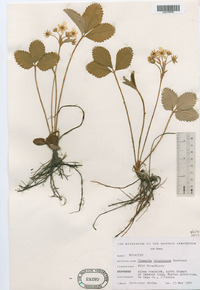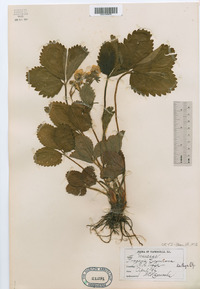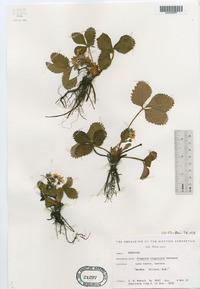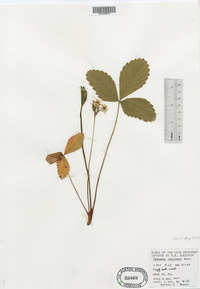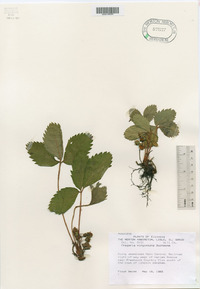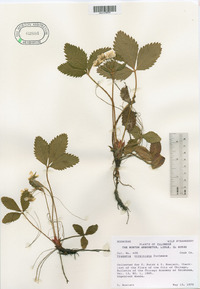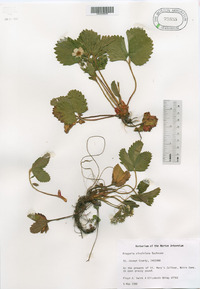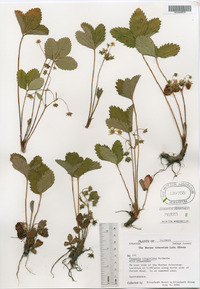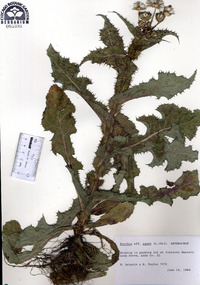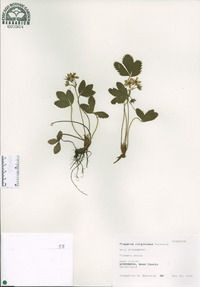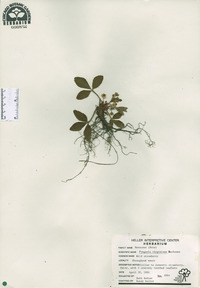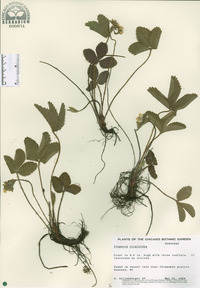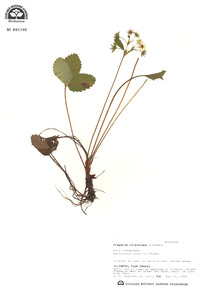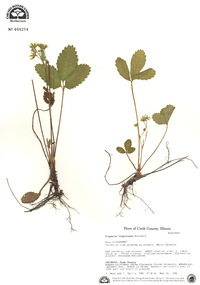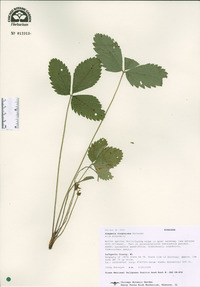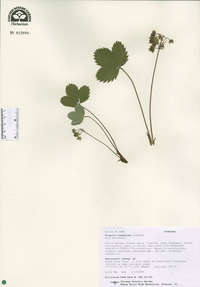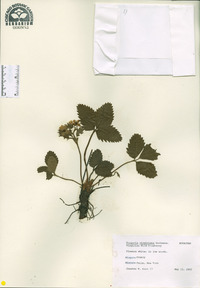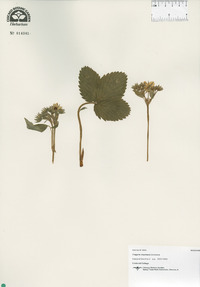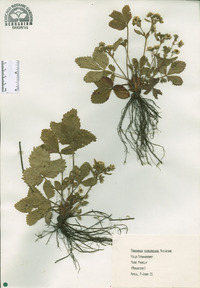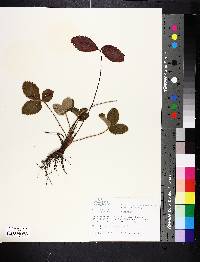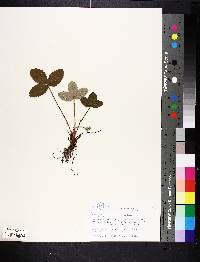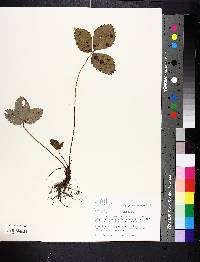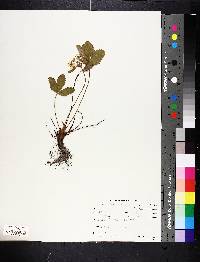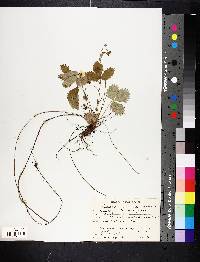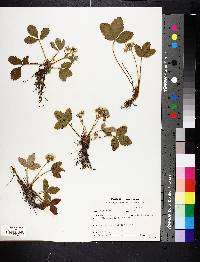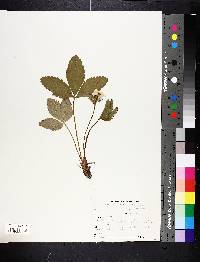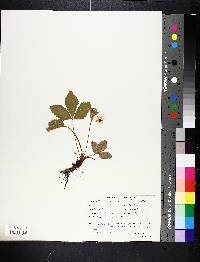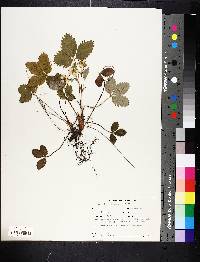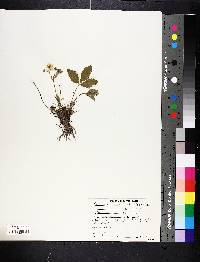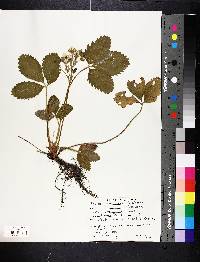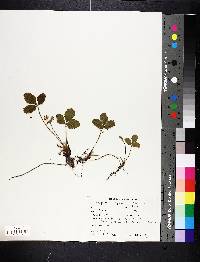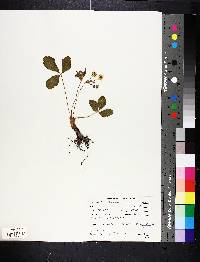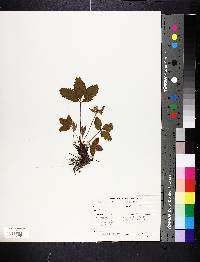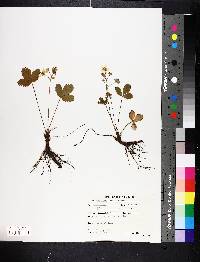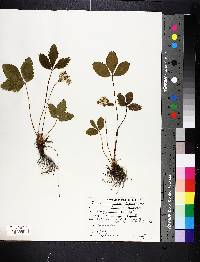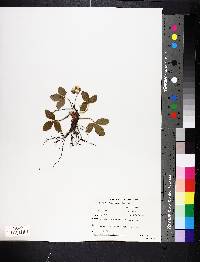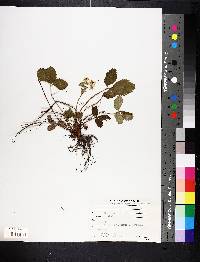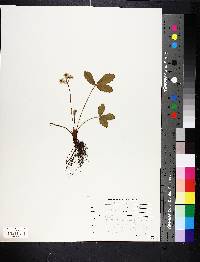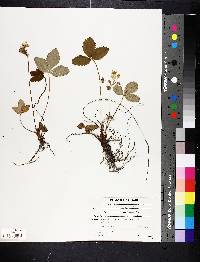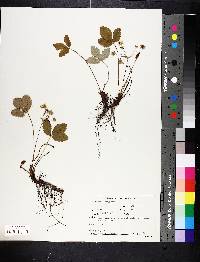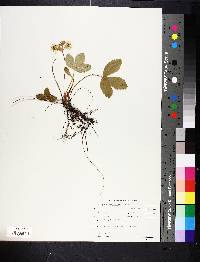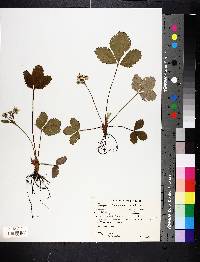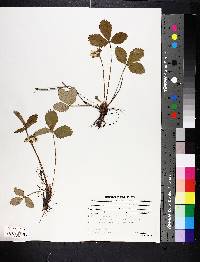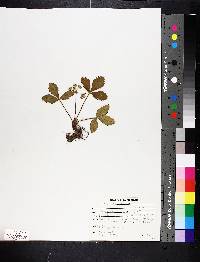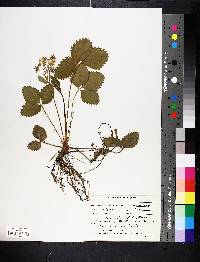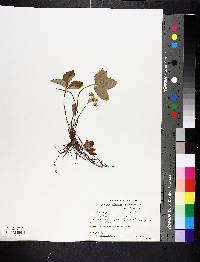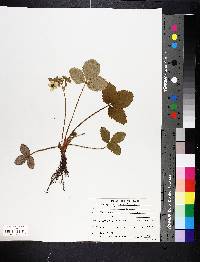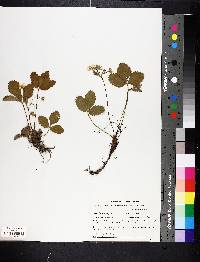Fragaria virginiana
|
|
|
|
Family: Rosaceae
Virginia Strawberry, more...thickleaved wild strawberry, wild strawberry
[Fragaria prolifica, moreFragaria pumila , Fragaria terraenovae , Fragaria yukonensis] |
General: Perennial, scapose, stoloniferous; scape, petiole, pedicels, and stolons sparsely to densely appressed- to spreading-pilose; caudex branched, scaly. Leaves: Basal, trifoliate, leaflets narrowly to broadly obovate, 2.2-5.5 cm long, 1.3-3.5 cm wide, the terminal leaflet often borne on a short petiolule, glaucous and glabrous to sparsely pubescent above, sparsely to densely silky- pubescent below, lateral veins not to only moderately sunken above, margins coarsely crenate-serrate, the terminal tooth reduced, often surpassed by the adjacent lateral teeth; stipules membranous, reddish brown, pubescent along the median; petiole 2-15 cm long. Flowers: Solitary at the nodes of stolons; pedicels 3-15 cm long, silky-tomentose; hypanthium cup-shaped, 2-3.5 mm deep; bractlets lanceolate to ovate-elliptic, 3.5-7.5 mm long, margins entire, lobed, or toothed; sepals spreading to reflexed at time of flowering, becoming erect in fruit, broadly deltate to ovate, 3-5.5 mm long; petals obovate, 5.5-11 mm long, yellow; stamens 20-25; pistils numerous; flowers May-October. Fruits: Achene, several, embedded in an enlarged receptacle, this red, fleshy, juicy. Ecology: Meadows, woodlands, coniferous forests; 1800-3400 m (6000-11000 ft); Apache, Cochise, Coconino, Graham, Greenlee, Navajo, Pima, and Yavapai counties; widespread throughout North America. Notes: Two varieties occur within our range and are distinguished as follows: var. glauca has appressed- pilose pubescence on the petiole and scape, and petals 5- 11 mm long; var. platypetala has spreading-pilose pubescence on the petiole and scape, and petals 8-12 mm long. Fragaria vesca (woodland strawberry) [=F. bracteata] is differentiated by bright green to yellowish green, more deeply veined leaves, the terminal tooth on the leaflets projecting beyond the adjacent lateral teeth; and the inflorescence is equal to or surpassing the leaves. It occurs in moist shady habitats, often among aspens and conifers. Besides having many medicinal uses, primarily treating problems of the digestive system, F. virginiana provides tasty fruits in the summer time-if berries can be harvested before birds, bears, and other animals get to them. They may be eaten raw or dried or made into preserves, cakes, jellies, jams, and sauces. The young leaves may also be made into a tea. Editor: Springer et al. 2008 Lfls petiolulate, glabrate to sericeous beneath, dark green or somewhat blue-green, thick and firm, flat, the principal lateral veins divergent from the midrib at an angle of ca 30Ь the teeth blunter and less divergent than in no. 1 [Fragaria vesca L.], the terminal tooth commonly less than half as wide as the adjacent lateral ones and surpassed by them; infl with as many as 12 fls on pedicels of about equal length, forming a corymbiform cluster mostly shorter than the lvs, even at maturity; pet 7-10 mm; fr 1-1.5 cm thick; 2n=56. Throughout much of the U.S. and s. Can. Apr.-June. Variable in orientation of pubescence, shape of the fr and other characters, but the several varieties or segregate species often recognized in our range need to be re-examined. (F. australis; F. canadensis; F. grayana; F. terrae-novae) Gleason, Henry A. & Cronquist, Arthur J. 1991. Manual of vascular plants of northeastern United States and adjacent Canada. lxxv + 910 pp. ©The New York Botanical Garden. All rights reserved. Used by permission. From Flora of Indiana (1940) by Charles C. Deam Probably found more or less frequently throughout the state, especially in the lake area, although there are no records from the southern counties. The fact that in my early collecting I rarely collected strawberries accounts for the scarcity of my records and for the absence of records from certain parts of the state. This is true not only of this species but of the remainder of the genus. This species is found in wet, moist, and dry soils, but generally in little or no shade. I have specimens from open, wooded slopes, crevices of cliffs, roadsides, fallow fields, interdunal flats, marshes, and right of ways of railroads. ...... Indiana Coefficient of Conservatism: C = 2 Wetland Indicator Status: FACU FNA recognizes two subspecies in our range: subsp. virginiana may have some spreading hairs on the stolon and proximally on the peduncles, but distal portions of the plant are appressed-hairy or glabrous; subsp. grayana has spreading-hairs throughout. |
|
|
|

